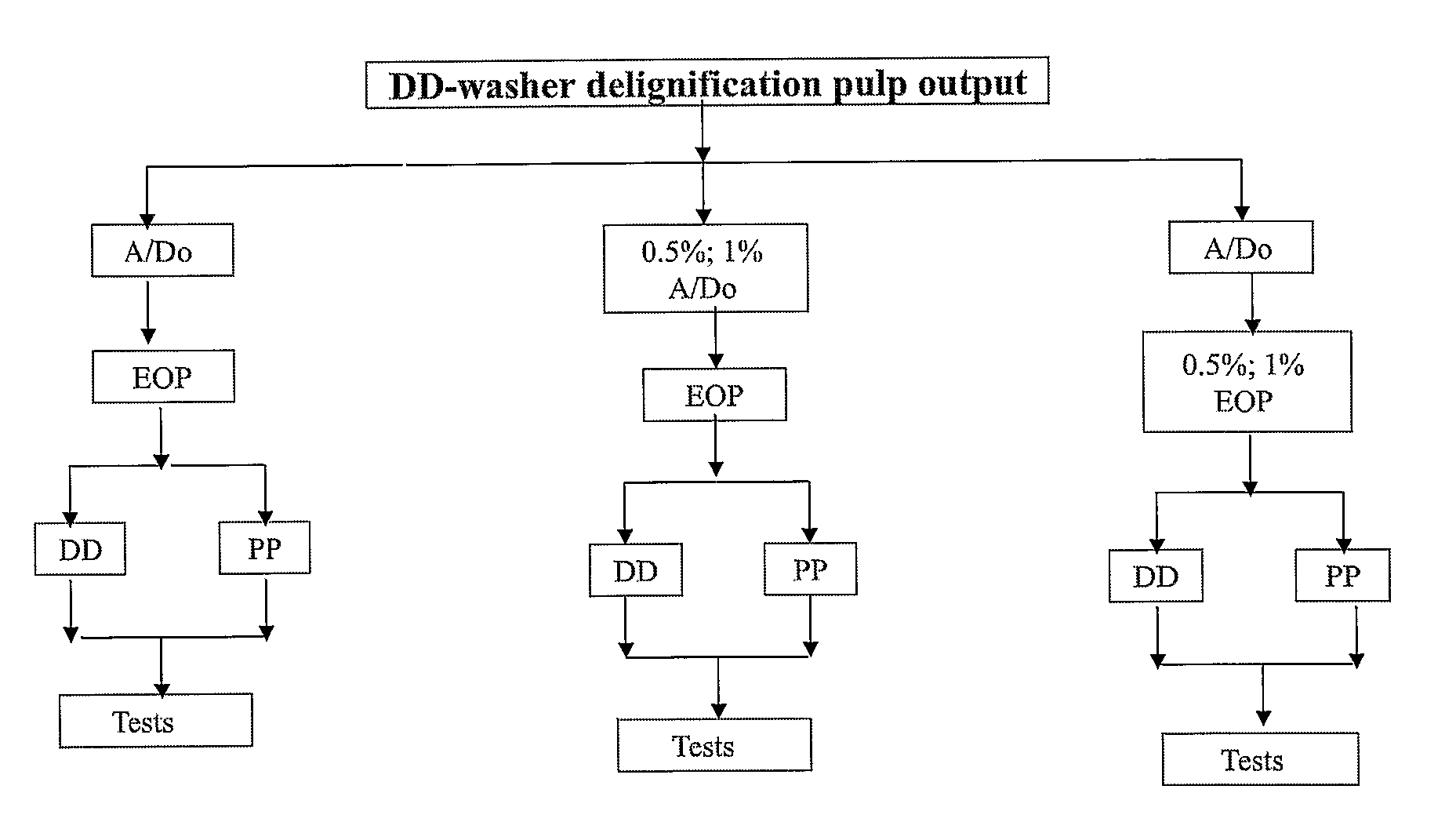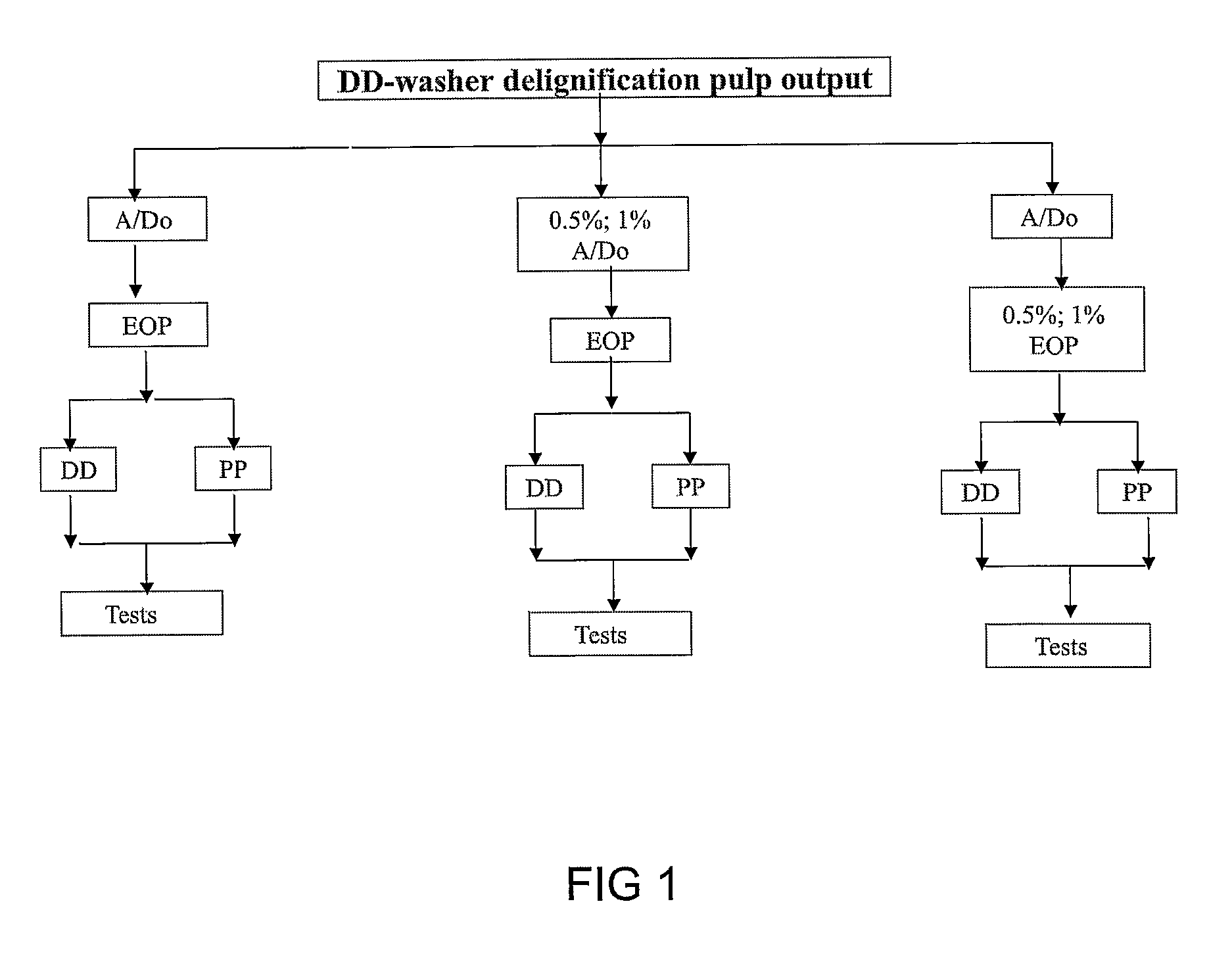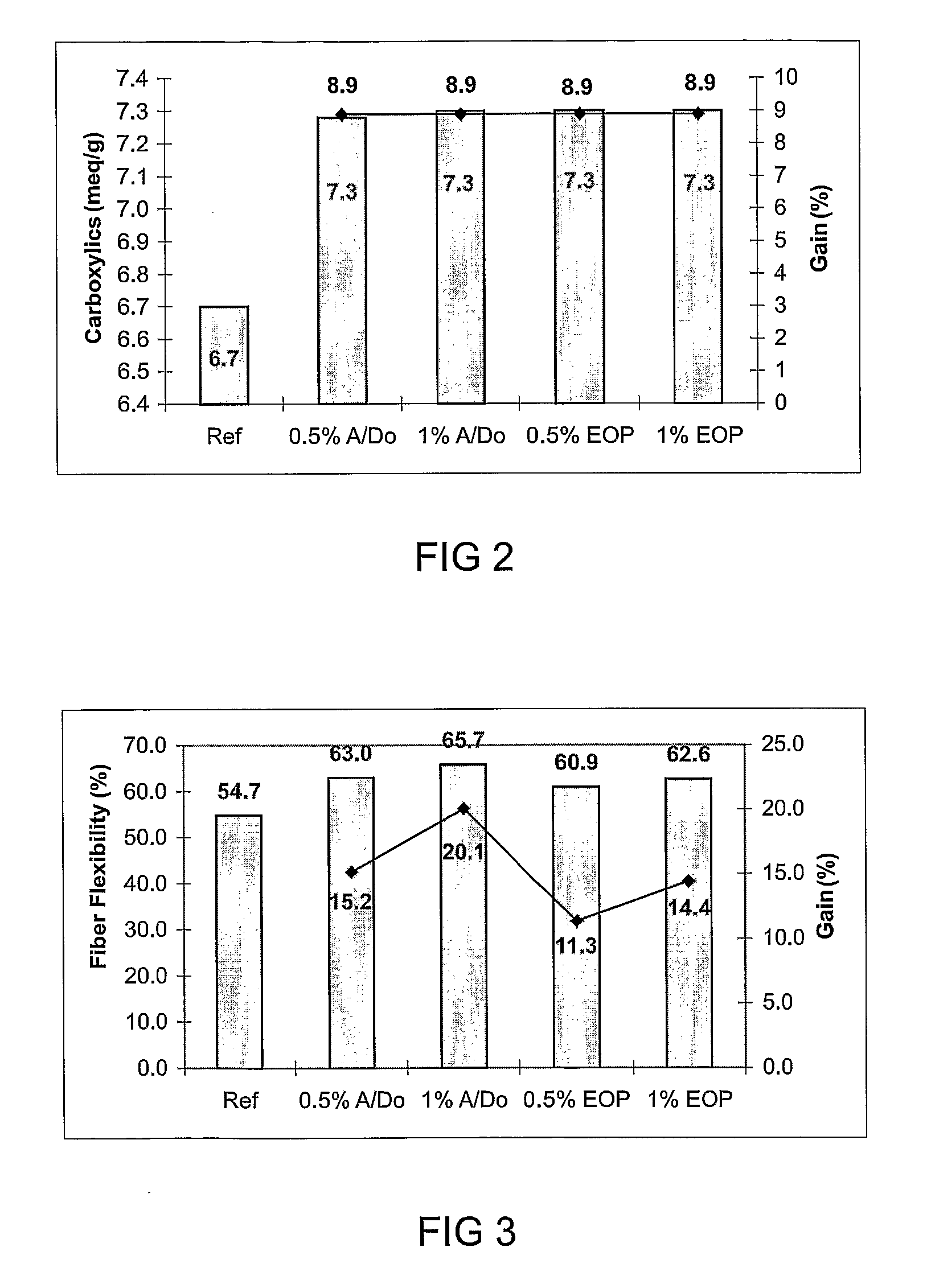Process for treating cellulose pulp using carboxymethycelulose and pulp thus obtained
a technology of cellulose and carboxymethycellose, which is applied in the field of processing cellulose pulp using carboxymethycellose and the obtained pulp field, can solve the problems of more fragile bonds and achieve the effect of significantly improving the mechanical strength properties of cellulos
- Summary
- Abstract
- Description
- Claims
- Application Information
AI Technical Summary
Benefits of technology
Problems solved by technology
Method used
Image
Examples
example 1a
[0027]The results for the unrefined pulp sequence A / D0(EOP)DD (0 PFI mill revolution) are shown in FIGS. 2 to 7. FIG. 2 shows the gains in the carboxylic contents of the pulp treated with CMC while FIG. 3 shows the flexibility of the pulp fibers treated with CMC. There has been an increase in the carboxylic content of the fiber corresponding to the higher CMC surface charges and also to an increase in the fiber flexibility due to the effect of plasticity and the CMC binding facility.
[0028]FIGS. 4 and 5 respectively show the water retention values (WRV) in the pulp and the drainage (PFR) of the pulp treated with CMC in the A / D0(EOP)DD bleaching sequence.
[0029]Although the pulp treated with CMC in the bleaching stage retains more water, there has been no significant loss in drainage, that is, in terms of process, it would not be necessary to reduce the speed of the drying machine.
[0030]The tensile strength data are shown in FIG. 6 and the bulk value of the treated pulp is depicted in ...
example 1b
A / D0(EOP)DD Sequence—3000 rev PFI (Refined Pulp in PFI Mill Up to 3000 Revolutions / Minute)
[0033]The tensile strength and bulk data for the pulp obtained with the A / D0(EOP)DD sequence after refining are shown in FIGS. 8 and 9.
[0034]The gains in tensile strength for the refined pulp were also very significant. Once again, the gains in the A / D0 stage have been shown to be higher than the gains of the addition in the EOP stage. Bulk maintains its drop trend, but the drop was once again not very significant.
[0035]In the refined pulp there was a drop in drainability after the addition of CMC. With the fibrillation obtained in refining, more carboxylic groups emerge on the surface of the fiber. These new groups added to the CMC groupings generate a higher number of hydrogen bridge bonds between the fiber and the water, consequently causing a loss in drainage.
[0036]In the refined pulp, there has been an high increase in air resistance, that is, the pulp became less porous. For papers that d...
example 2a
A / D0(EOP)PP Sequence—Unrefined (0 rev PFI)
[0038]In the sequences with final PP bleaching stages, another sequence has been used and there has been an increase in the content of carboxylics and in the flexibility of fibers with the addition of CMC, as shown in FIGS. 10 and 11. A higher water retention has also been noted in the pulp treated with CMC, however, the loss of drainability is not so significant as to need a large reduction in the speed of the drying machine (FIGS. 12 and 13).
[0039]As in the A / D0(EOP)DD bleaching sequence, the gains in tensile strength were very significant (FIG. 14). Once again, the largest gains occurred in the pulp in which the addition of the polymer was made in the A / D0 stage due to the conditions of this stage. Bulk (FIG. 15) maintains its drop trend, but the drop is also not significant, as in all other cases. Other results are shown in Table 4 below.
TABLE 4PropertyReference0.5% A / DoGain (%)1% A / DoGain (%)0.5% EOPGain (%)1% EOPGain (%)DCAT20.325.324....
PUM
| Property | Measurement | Unit |
|---|---|---|
| temperature | aaaaa | aaaaa |
| temperature | aaaaa | aaaaa |
| concentration | aaaaa | aaaaa |
Abstract
Description
Claims
Application Information
 Login to View More
Login to View More - R&D
- Intellectual Property
- Life Sciences
- Materials
- Tech Scout
- Unparalleled Data Quality
- Higher Quality Content
- 60% Fewer Hallucinations
Browse by: Latest US Patents, China's latest patents, Technical Efficacy Thesaurus, Application Domain, Technology Topic, Popular Technical Reports.
© 2025 PatSnap. All rights reserved.Legal|Privacy policy|Modern Slavery Act Transparency Statement|Sitemap|About US| Contact US: help@patsnap.com



